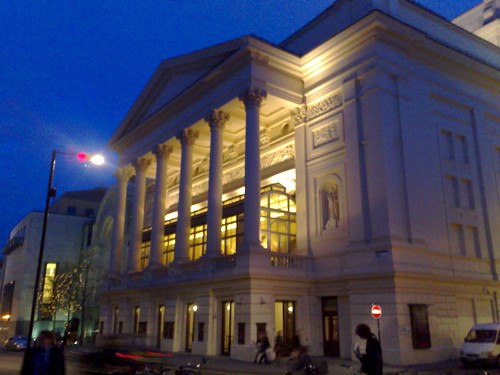
Friday 23rd March was a mesmerising and completely unique day for ballet fans all over the world. The Royal Ballet at The Royal Opera House was streamed live all day from 10.30am on YouTube and The Guardian website, a world-first for dance.
The real-time day began with how every dancer’s day begins. The ritual of daily company class was followed by a whole day of rehearsals of the current season, such as the hi-tech spectacle of Alice’s Adventures in Wonderland. The broadcast included interviews and an examination of dancers’ lives, countering the numerous myths which have arisen surrounding the “notorious” side of the ballet world. Finalising the day was an exclusive Insights event, which explored Resident Choreographer Wayne McGregor’s new ballet in collaboration with musician Mark Ronson, Carbon Life. Contemporary McGregor demands entirely different physical aesthetics from the dancers, for example the abstract form and nude-coloured dance underwear of CHROMA.
Running parallel to the streaming was a Twitter trend, a constant feed by both official parties and fans alike, tweeting tales of tutus and discussing the blood, sweat and tears it takes to be a dancer in the famous pointe shoes of one of the world’s greatest ballet companies. The immense fan-base of The Royal Ballet was immeasurable, notably inspiring many followers to release their inner dancer and don their legwarmers!
The spectacular events unveiled online by The Royal Ballet give way to the speculation of a phenomenon inextricably linked to the streaming: the virtual ballet class. This would increase the accessibility of high-end ballet to general dance fans, providing a means for many more people to actively engage with dance by downloading or following a live, online ballet class. Dusting off the leotards and pink practice shoes may prompt the realisation of the integral “daily class” strand of ballet to the success of principal dancers to those participating in their first class.

 Many dance crazes throughout the years have come and gone, yet with a programme boasting over 12 million participants in 2011; Zumba looks like it’s set to stay.
Many dance crazes throughout the years have come and gone, yet with a programme boasting over 12 million participants in 2011; Zumba looks like it’s set to stay.